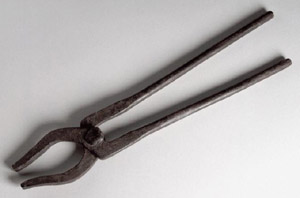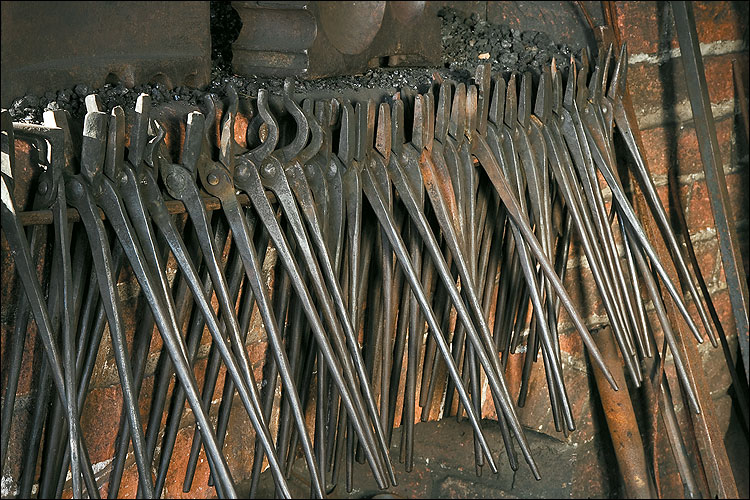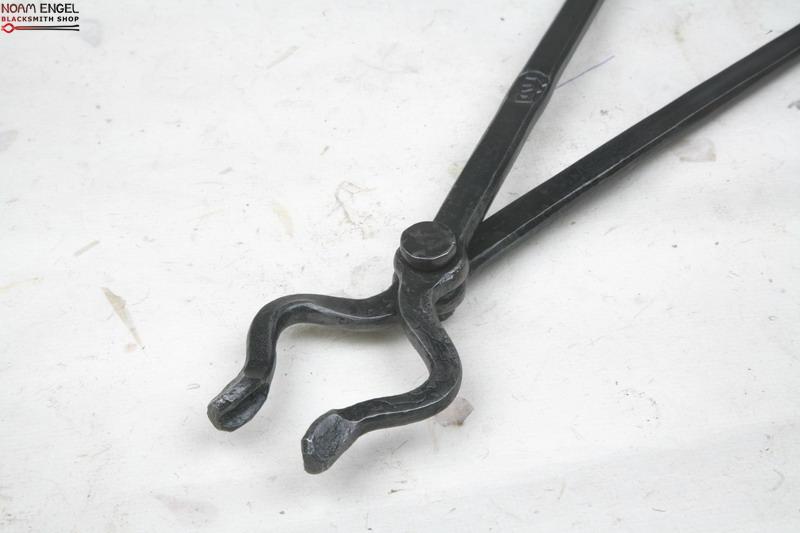Blacksmith Tongs
Although Roman forts were primarily military bases, they were also home
to the troops who garrisoned them, together with a retinue of dependants
and camp-followers. All had to be fed and clothed, and, since the soldiers’
relatively high rates of pay gave them considerable purchasing power,
provided with a wide range of goods and services.These
carved jasper stones, or intaglios, were used like modern signet
rings to impress the owner's mark or good-luck sign. All are from
Newstead. They show, from left to right: Fortuna, with
her pan and horn of plenty; Gannymede offering a cup to Jupiter's
eagle; a satyr playing his pipes beneath a tree; and Bonus Eventus
- the spirit of success - holding ears of corn and a bunch of grapes.All © SCRAN/National Museums of Scotland
In the early stages of occupation, when the forts were being set up, most
of the troops were probably unaccompanied by families or followers, although
the size of the commanding officers’ quarters suggests that they brought
substantial households with them. Letters found at Vindolanda in Northumberland
show that the commanding officer of the Ninth Batavian Cohort, stationed
there in the 90s, was accompanied by his wife Sulpicia Lepidina.
Blacksmith Tongs

Blacksmith Tongs

Blacksmith Tongs
Blacksmith Tongs

Blacksmith Tongs

Blacksmith Tongs

Blacksmith Tongs

Blacksmith Tongs

No comments:
Post a Comment